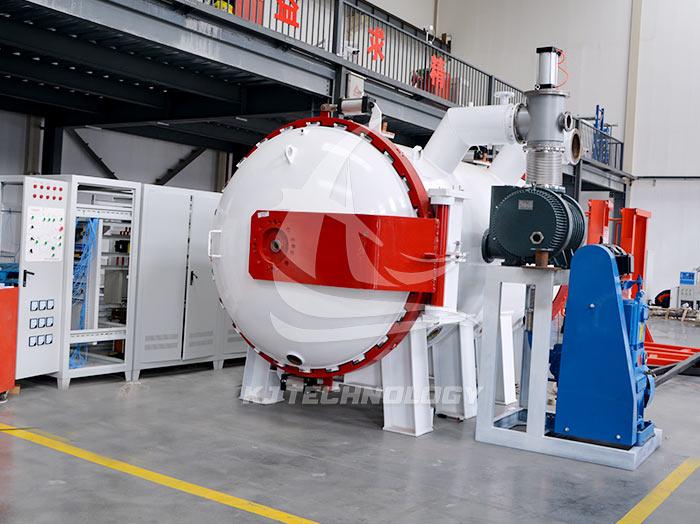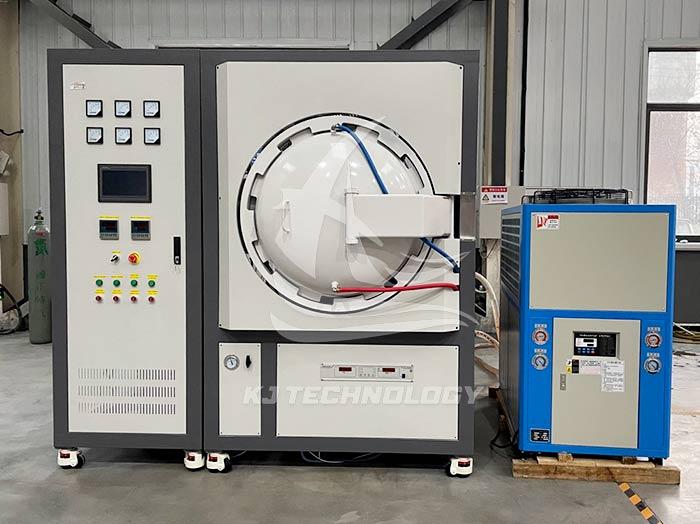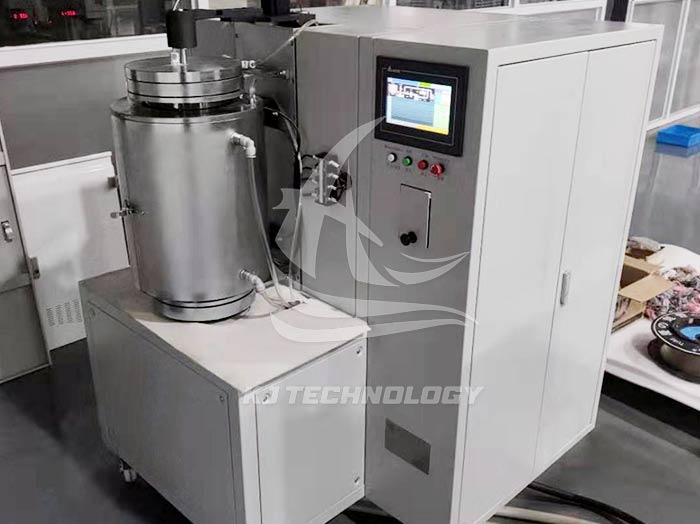The vacuum degree of the vacuum degreasing furnace cannot be drawn up
 08-22-2025 Author: KJ technology
08-22-2025 Author: KJ technology
The inability to increase the vacuum degree of the vacuum degreasing furnace may be caused by various reasons. It is necessary to investigate from the aspects of vacuum pump, seals, leaks, material release, control system, etc. The following are specific analysis and solutions:
1. Vacuum pump related issues
Pump oil pollution, insufficient or too thin: The state of the pump oil directly affects the performance of the vacuum pump. If the pump oil is contaminated, insufficient or too thin, it can cause poor operation or damage to the vacuum pump, thereby affecting the vacuum degree. At this point, the vacuum pump should be cleaned, replaced with new vacuum pump oil, or replaced with a new pump.
Pump overheating or component expansion: Pump overheating or component expansion may result in a small gap, affecting the pumping efficiency of the vacuum pump. At this point, it is necessary to strengthen the cooling of the pump, check if the power supply is normal, and repair or replace damaged vacuum pump parts.
Insufficient pumping capacity of vacuum pump: If the pumping rate of the vacuum pump is too low or the vacuum degree is not high, it can also cause the vacuum degree to not be pumped up. At this point, the type and performance of the vacuum pump should be checked to ensure that it meets the requirements of the vacuum degreasing furnace. For processes that require high vacuum levels, a combination of mechanical pump+diffusion pump or mechanical pump+molecular pump may be necessary.
2. Sealing component issue
Aging, corrosion or damage of seals: Seals are key components to ensure the sealing performance of vacuum degreasing furnaces. If the seal is aged, corroded, or damaged, it can cause air leakage, which in turn affects the vacuum degree. At this point, aged or broken seals should be inspected and replaced to ensure good sealing.
Scratches or insufficient fastening force on the sealing surface: Scratches or insufficient fastening force on the sealing surface may also cause air leakage. At this point, the sealing surface should be repaired or replaced, and the tightening force should be ensured to be moderate.
3. Leakage issue
Leakage: Leakage is usually easier to detect and can be searched for using methods such as flame detection. For larger leaks, you can use candles or lighters to gradually search near the suspicious point and observe whether the flame is offset towards the leak.
Internal leakage: Internal leakage is relatively difficult to detect and often occurs on equipment with water cooling points. If the pumping speed of the mechanical pump is significantly low, the vacuum gauge reading is low, the mechanical pump oil quickly emulsifies, and the iron-based components in the vacuum chamber are visibly corroded, it may indicate the presence of internal leakage. At this point, the cavity should be cleaned first, and then cooling water should be supplied. Carefully check if there are any wet spots in the water supply pipeline, which are the leakage points.
4. Material deflation issue
Furnace or workpiece contamination: Residual pollutants such as oil, moisture, or organic matter on the surface of the furnace or workpiece will continue to release gas at high temperatures, affecting the vacuum degree. At this time, the furnace body or workpiece should be cleaned and dried.
Improper material selection: Some materials may release more gas in high vacuum environments, affecting the vacuum degree. At this point, materials with high temperature resistance and low gas release rate should be chosen to replace ordinary materials.
5. Control system issues
Damaged or improperly set temperature controller: The temperature controller is a key component for controlling the temperature of the vacuum degreasing furnace. If the thermostat is damaged or improperly set, it may cause the heating element to malfunction, thereby affecting the vacuum degree. At this point, it is necessary to check and adjust the settings of the thermostat, replace or reconnect the thermocouple, and repair the control system.
Vacuum gauge malfunction: The vacuum gauge is a critical component for measuring vacuum degree. If the vacuum gauge malfunctions or is not calibrated accurately, it may result in inaccurate readings, affecting the judgment of vacuum degree. At this point, different principle vacuum gauges should be used for comparison readings to confirm if there are calibration errors, and the vacuum gauge should be repaired or replaced in a timely manner.
6. Other factors
Unreasonable vacuum pipeline design: The design of vacuum pipelines directly affects gas flow resistance. If the length of the vacuum pipeline is too long, there are too many bends, or the diameter is too small, it will increase the gas flow resistance and affect the vacuum degree. At this point, the vacuum pipeline design should be optimized by shortening the pipeline length, reducing the number of bends, and increasing the pipeline diameter.
Improper operation: Improper operation may also result in the inability to increase the vacuum level. For example, failure to close the furnace door or connect the vacuum pipeline correctly before vacuuming. At this point, it is necessary to strengthen the training of operators to ensure standardized operation.








